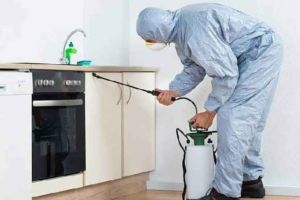Atlanta Security Services are often the first to respond in emergencies. They follow established protocols and collaborate with law enforcement to provide assistance and information.
Security guards are found in many settings, including hospitals, schools, and construction sites, and they provide private security for VIPs. They are responsible for preventing security breaches by monitoring and deterring criminal activity.

Security guards are often the first to respond when a problem arises. This is why it is important that they stay alert and vigilant while on duty, able to quickly identify suspicious activity and communicate with guests in a professional manner. Security guards also serve as a visible deterrent to potential wrongdoers, helping foster a sense of safety in public venues and high-traffic areas.
In this role, security guards regularly patrol assigned areas to prevent security breaches and theft. They may use surveillance equipment to monitor activities and patrol on foot or in a vehicle. They check identification, verify visitors, and record arrivals and departures. Security guards are also on call to collaborate with law enforcement when necessary.
The security team at your data center is constantly monitoring the network. This is a crucial process that requires centralized and normalized logs in order to detect threats before they happen. SolarWinds Security Event Manager (SEM) is an advanced monitoring service that acts as an extra pair of eyes on your infrastructure, identifying anomalous behavior on your network and delivering critical alerts to the right people.
Security monitors can be found in a variety of settings, including commercial facilities, events, hospitals, and residential communities. In office buildings and corporate campuses, they manage access control systems and act as an on-site liaison for emergency services. At hospitals, they may be responsible for patient safety, securing sensitive information, or conducting background checks. In residential settings, security guards work to ensure a safe living environment, supervise apartment complexes and gated communities, and provide ongoing security presence.
Security officers are trained in conflict de-escalation and can handle issues involving guests, visitors, or staff. In a hospital setting, they are tasked with managing visitor flow, checking for signs of illness or injury, and interacting with patients on behalf of staff. At schools, they monitor entry points, oversee building security, and ensure student safety and security. They also interact with guests at reception desks and are on-call to help with any questions or concerns. This is a highly dynamic position that requires a detailed knowledge of safety protocols and laws to perform effectively.
Crowd Control
A security guard must be able to direct crowds and prevent them from getting into dangerous situations that could jeopardize their safety or the success of an event. For example, if an event is held in an outdoor venue and a storm starts to brew, the security guard must know how to evacuate the crowd quickly and efficiently. In addition, the guard must be able to communicate with local emergency responders to keep them updated on the situation.
This is a big part of what makes a security guard special and important. It’s a skill that’s not always easy to master and is often overlooked in a lot of training programs.
In addition to directing crowds, a trained security guard can help with the logistics of the event. This can include helping to create the floor plan that will help everyone get where they need to be during the event. It can also involve things like securing equipment, establishing a chain of command and providing an overall safety plan.
A good security guard will also be able to provide feedback on the event to management and attendees. This can help with planning for future events, and it can also give a glimpse into what worked and what didn’t work. For instance, if the event had issues with overcrowding, it’s helpful to know that this was an issue for the attendees and how the organizers can remedy the situation for the next time.
One of the best ways to manage a crowd is by using barriers and fencing to help contain people and prevent them from getting into dangerous areas. For example, when a crowd is gathered outside of an arena to watch an event, it’s often necessary to have fencing in place. This helps to keep the crowd safe and secure and allows the audience to enjoy the show without worrying about getting hurt by other people.
For large-scale events, it’s important to have a system in place for the guests to report issues. This can be as simple as a number they can call or text, or it can be built into the event app. This way, a guest can report a problem from anywhere during the event and have it immediately addressed.
Emergency Response
In the event of a fire, security guards are trained to quickly assess the situation and take immediate action. They activate fire alarms, direct people to safe exits, and collaborate with firefighting professionals to prevent the spread of the flames. Security personnel also have the ability to manage crowds in emergency situations, preventing stampedes and panic.
Medical emergencies are another area where security guards can be of assistance. With training in first aid and cardiopulmonary resuscitation (CPR), security guards can help stabilize individuals until the arrival of medical professionals. This support helps individuals during a stressful time and can even save lives before emergency services arrive.
During disasters, it is common for individuals to become lost or separated from their families. Security guards can assist in finding missing persons and reuniting them with their loved ones. They also have the skill and sensitivity to handle this type of situation with empathy and compassion.
Security guards also act as force multipliers during crisis management, coordinating with local law enforcement, firefighters, paramedics, and other emergency personnel to ensure a unified response. Security guards relay critical information and provide support to these teams so that they can focus on providing necessary care to the affected individuals.
Security guards are responsible for educating the public about safety measures and emergency procedures in their areas of responsibility. They also participate in community engagement activities to build trust and cooperation. In addition, they are often visible deterrents against criminal activity. Their uniforms and badges serve as a clear indication of their authority, which can discourage criminals from committing unlawful acts. Security guards also conduct post-incident analysis to identify what went well and what can be improved upon in future emergency responses. Performing these reviews allows security guards to develop and improve their protocols, which ultimately benefits those they protect.
Customer Service
Customer service is a vital aspect of business, and security guards play a critical role in customer satisfaction. Providing excellent customer service will ensure customers keep coming back and recommend your business to friends and family. Security officers who possess strong communication skills can provide exceptional customer service, while also fulfilling their safety and security roles.
Often times, the first person a customer encounters is a security guard. A well-dressed, professional security officer can create a positive first impression and set the tone for the rest of the visit. Security personnel can greet visitors with a smile and warm welcome, which makes them feel safe and valued.
Security guards are trained in conflict resolution and de-escalation techniques. This means they can help diffuse tense situations before they escalate, protecting both the customer and the employee. They can listen to concerns and empathize with frustrations while working towards fair solutions. Security guards are the peacekeepers of the workplace, ensuring customers can shop or work in a secure environment.
A security guard can offer assistance to customers and visitors by answering questions, directing them where they need to go, and helping during emergencies. They can also help keep your customers happy by offering special discounts and promotions. Taking the time to communicate with customers and offer their help is a great way for security guards to show they care about a company’s reputation.




